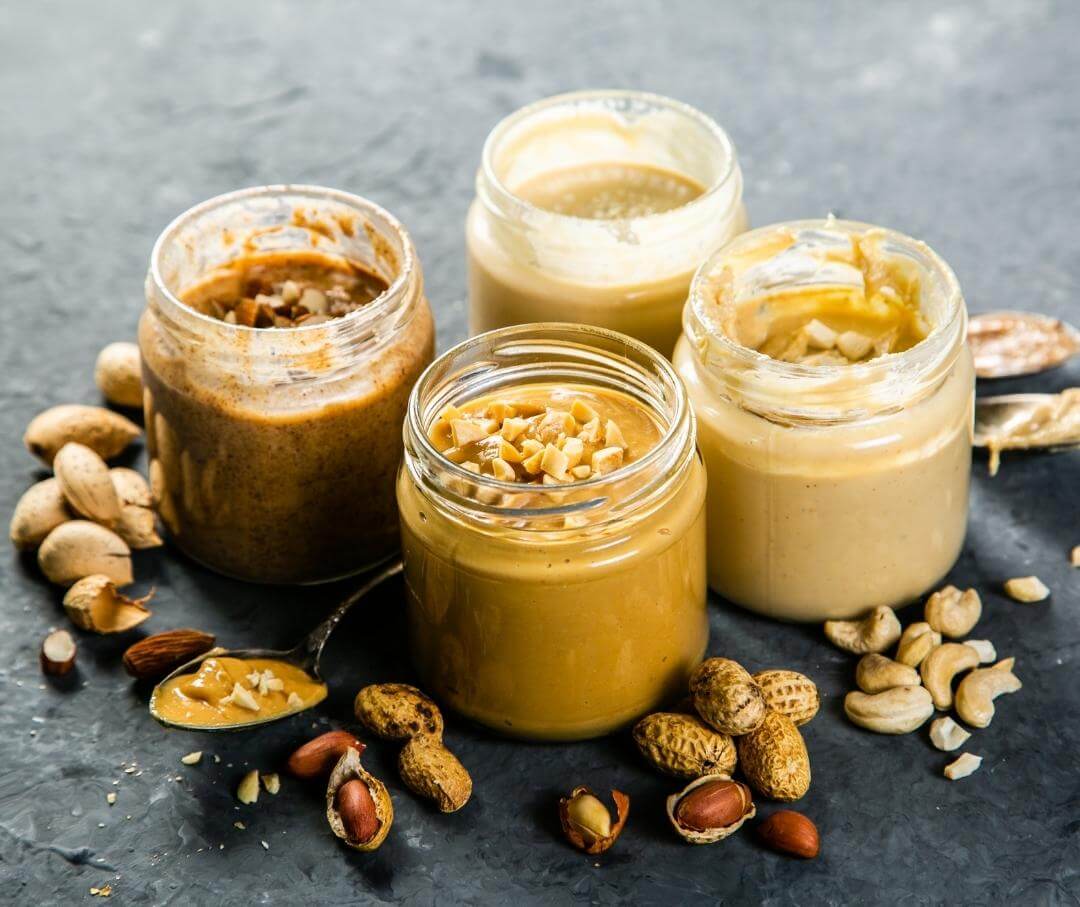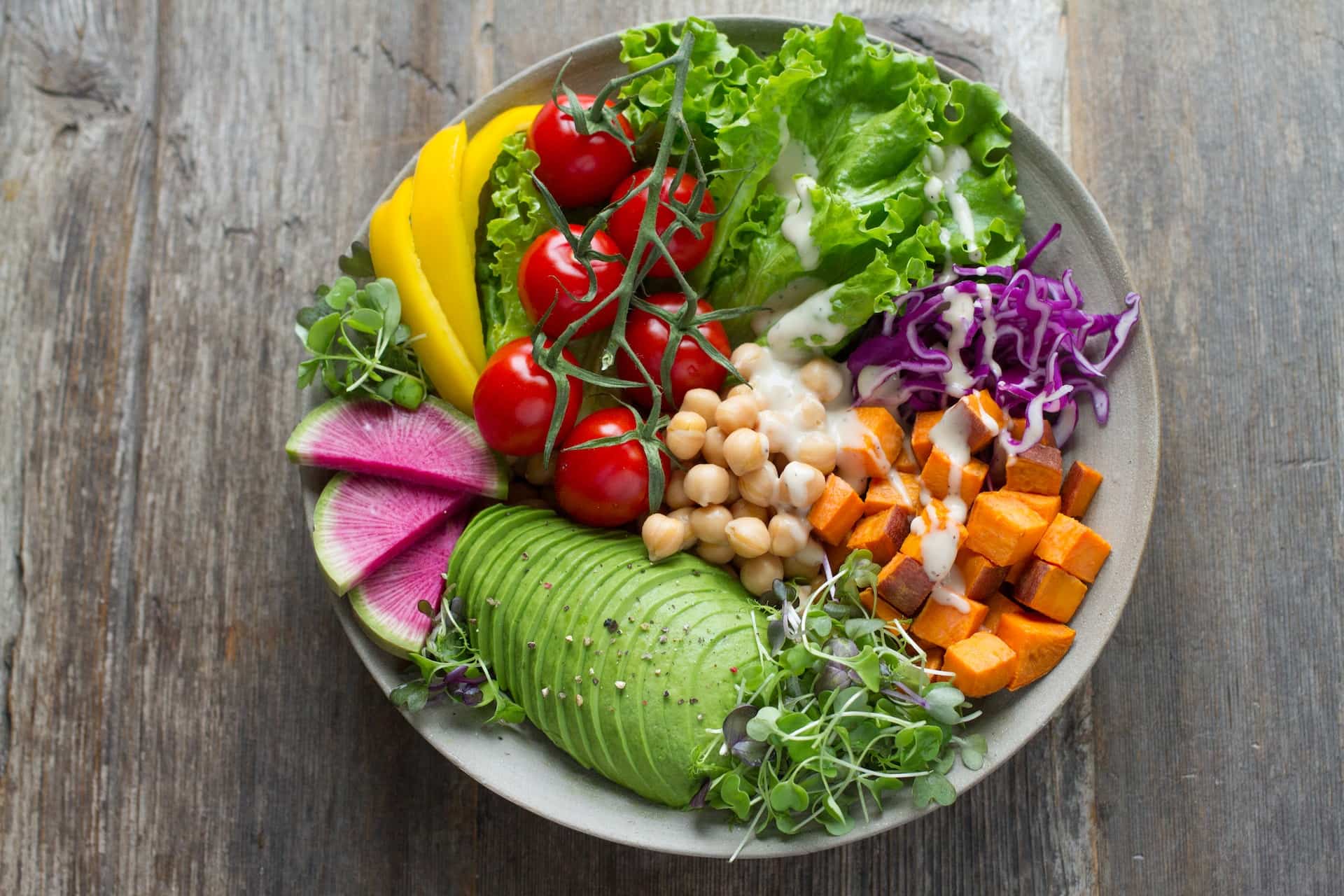It works great for an hour, and then you hit a wall. You’re tired and can’t concentrate. Before you know it, you are distracted, scanning your phone, or nodding off. Maybe you hit the kitchen or break room again for something else to eat or drink to give you another boost.
You probably didn’t think about how those choices may impact how quickly you “crashed.” But those mid-afternoon slumps do have a lot to do with what you eat and drink because they affect your blood sugar.
Let’s examine how nuts might be a good choice for preventing blood sugar spikes and energy slumps.
So, Do Nuts Raise Blood Sugar?
Yes! Nuts are an excellent food if you are trying to maintain healthy blood sugar levels.
- High in protein, fiber, and healthy fats
- Help with a slow and steady release of sugar into your bloodstream
- Nuts contain some carbohydrates, but the glycemic index and glycemic load are low
While nuts are high in fat, you may think eating them would lead to weight gain.1 Yet, the opposite seems to be true. Not only do people not gain weight, but they also have improved body composition. Because nuts are high in healthy fats and fiber, they tend to be satiating, minimizing hunger pangs.2
A 2018 meta-analysis study did not find an association between nut consumption and the incidence of type 2 diabetes. However, participants did have a decrease in fasting blood sugar and a reduction in cholesterol and LDL cholesterol.3
Nuts and Diabetes
Nuts can provide various benefits for individuals living with diabetes. One study found that nut consumption was associated with decreased risk factors for cardiovascular disease, type 2 diabetes, and metabolic syndrome (a cluster of conditions including prediabetes, high blood pressure, and high cholesterol).25
Nuts can also help regulate blood sugar levels, making them an ideal snack for those with diabetes. However, the preparation of nuts can impact blood sugar levels and calorie content. Aim to avoid nuts coated in salt and those with a candy coating or dipped in honey. These nut varieties are certainly flavorful but could impact blood pressure, blood sugar, and weight loss.
{{mid-cta}}
Best Nuts for Blood Sugar, Diabetes, and Energy
The 6 top nuts for stable blood sugar:
- Almonds
- Cashews
- Peanuts
- Pecans
- Pistachios
- Walnuts
1. Almonds
A serving of almonds is 1 oz, which equals approximately 23 almonds or a small handful. Each serving contains about 160 calories, 6g of protein, 14g of fat, 6g of carbohydrates, 4g of fiber, and 1g of sugar.4 Almonds have the highest vitamin E content of all tree nuts, providing about 50% of the daily value in one serving. They are also rich in mono and polyunsaturated fats.4
A randomized study found that snacking on almonds reduced blood glucose levels and improved feelings of satiety in people at risk for diabetes. They also experienced no weight gain.5
In an earlier trial, researchers found that eating 60g of almonds daily as part of a healthy diet reduced fasting glucose levels and markers of insulin resistance. The participants also improved their body fat and reduced total cholesterol and LDL levels.6
Tip: Add chopped almonds to overnight oats to boost protein, fiber, and a healthy dose of Vitamin E and potassium.
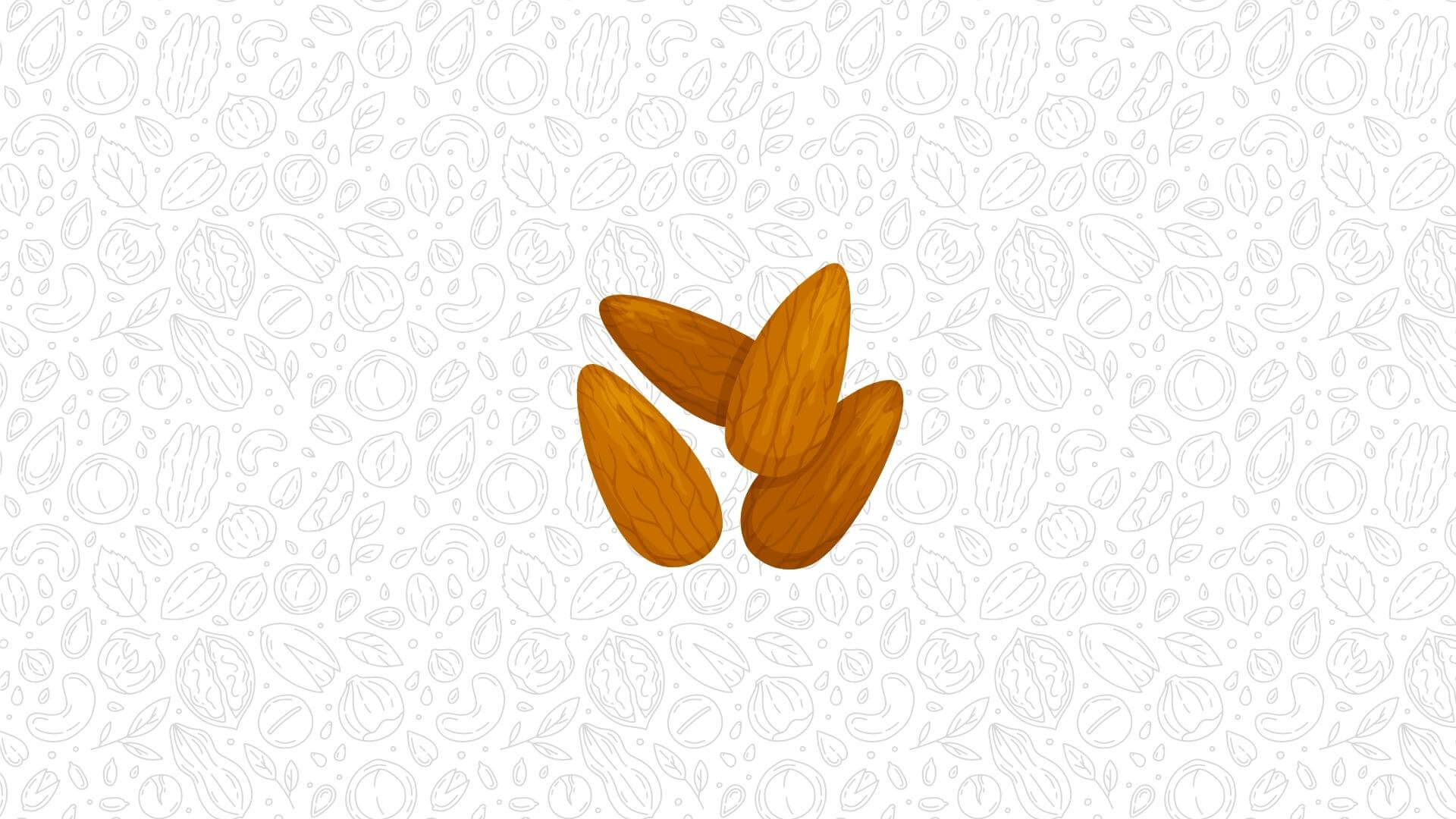
2. Cashews
One oz. serving of cashews is about 18 nuts or ¼ cup. A serving contains about 160 calories, 4g protein, 13g fat, 9g carbohydrates, 1g fiber, and 1.5 g sugar.7
While cashews have the most carbohydrates of all nuts, they are the lowest in fat, with the majority coming from monounsaturated fat.
Cashews have gotten a bad rap because they are higher in saturated fat than other nuts; however, some research has shown that eating cashews instead of a high carbohydrate snack improves cholesterol and LDL cholesterol levels.9
A small study of 50 people with type 2 diabetes looked at those who ate cashews daily for eight weeks compared to those who did not. The cashew eaters had lower serum insulin levels and reduced LDL to HDL cholesterol ratios. More research is needed, but these results are promising, and cashews and cashew products can be part of a healthy diet.10
Tip: Cashew milk is a rich dairy alternative that works well in coffee drinks or to make a cream sauce. Check the added sugars on the label, or make your own by soaking the 1 cup of nuts in 4 cups of water for a few hours. Drain and blend the cashews and 2 cups of water until smooth.

3. Pistachios
A 1 oz. serving of pistachios contains 160 calories, 6g of protein, 13g of fat, 8g of carbohydrates, and 3g of fiber.11
Now that shelled pistachios are readily available (and easier to eat), you may wonder if pistachios are a nut you should include in your diet, especially if you are trying to maintain your weight and stabilize your blood sugar.
In a small study, eating pistachios with white bread significantly reduced glycemic response.12
Another recent study found that people with diabetes who ate pistachios twice daily had lower blood sugar levels than those who ate none.13
Tip: Chopped pistachios add a beautiful, rich color and flavor to whole-grain rice pilaf or a grain bowl. Add a tablespoon or two just before serving for a gorgeous pop of color.
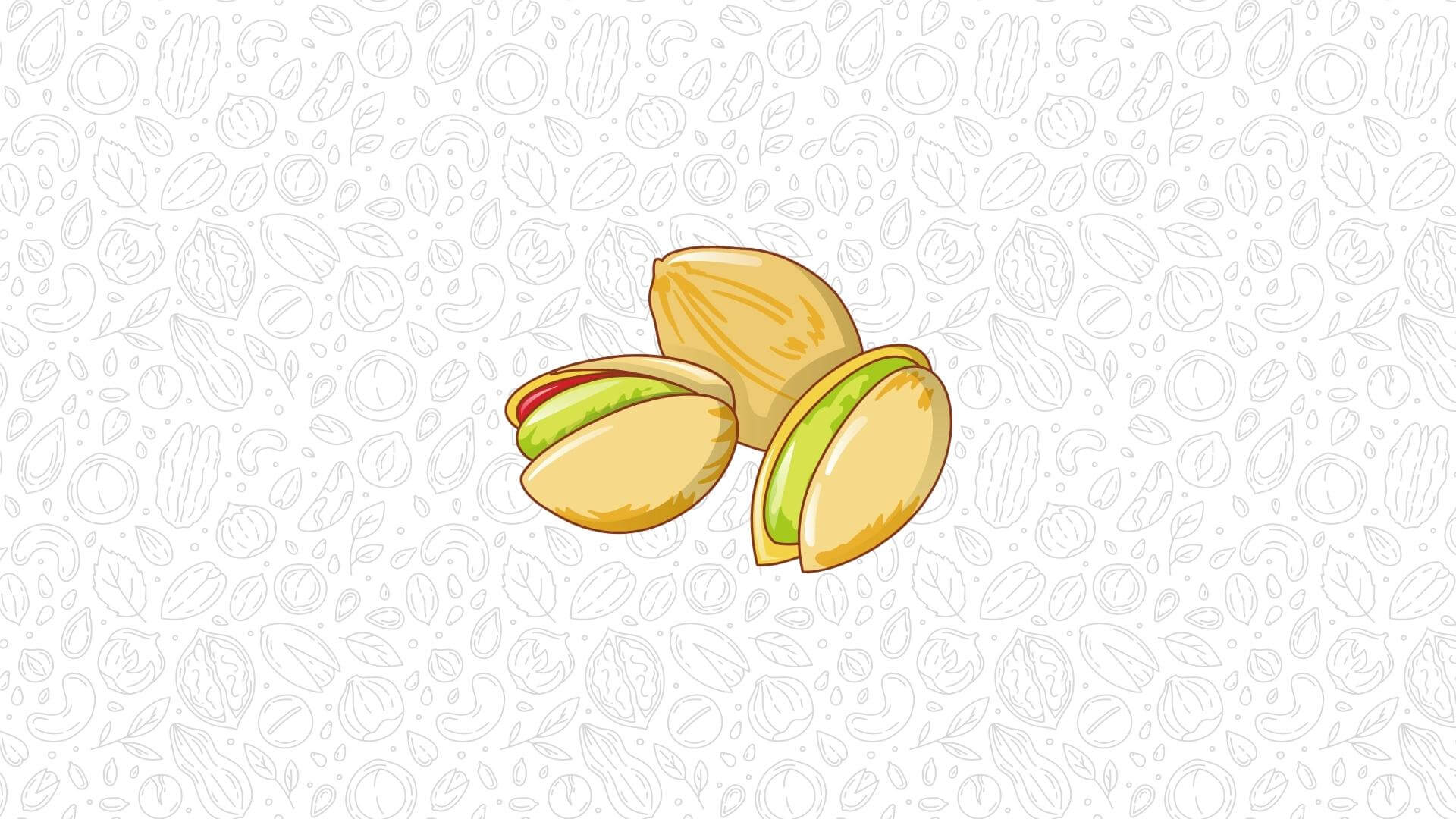
4. Peanuts
A serving of peanuts is about 28 nuts and contains about 160 calories, 7g protein, 14g fat, 5g carbohydrates, 2.5g fiber, and 1g sugar.14
Peanuts are a good source of plant-based protein, and 80% of their fat comes from unsaturated fats. They are also very low on the glycemic index scale and help stabilize blood sugar levels.15
Peanuts and peanut butter, when added to a high-glycemic breakfast, helped stabilize blood glucose levels and improve satiety in women at risk for type 2 diabetes.16
In another small study with people with type 2 diabetes, eating peanuts and almonds instead of a higher starch food resulted in improvements in blood sugar levels and no change in body mass index.17
Tip: Add two tablespoons of peanut butter to whole-grain toast or use it as a dip with vegetables for an afternoon snack.
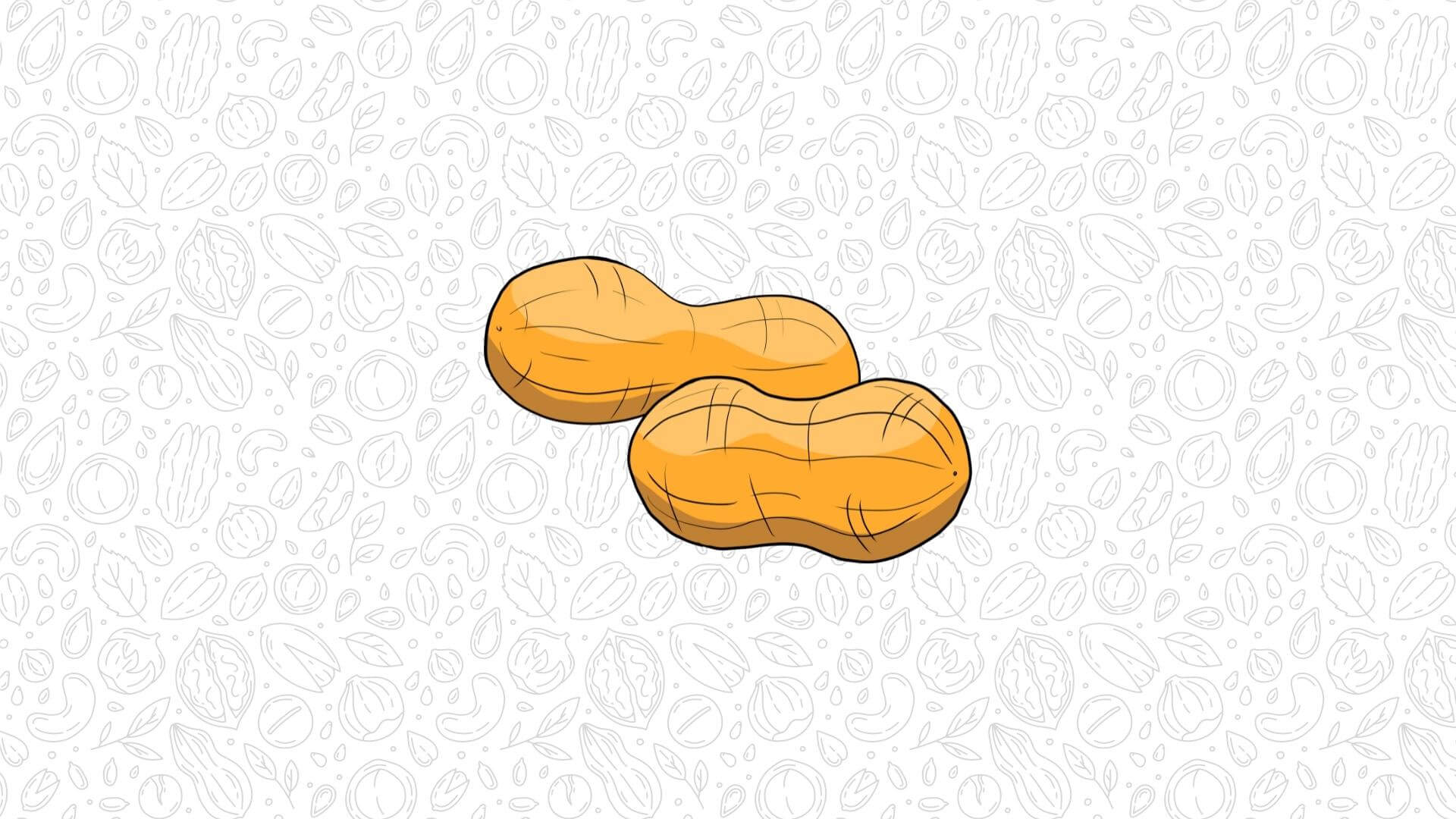
5. Pecans
A 1 oz. serving of pecans contains about 200 calories, 3 g protein, 20g fat, 4 g carbohydrates, 3 g fiber, and 1 g sugar.15,18
Pecans are higher in fat than other nuts, but some of that fat comes from ALA omega-3 fatty acids, which have anti-inflammatory properties and are a good source of zinc.
In a small study with overweight and obese patients, eating 1.5 oz. of pecans daily reduced fasting insulin and improved insulin resistance. The patients also improved their cardiovascular risk by reducing total cholesterol and LDL cholesterol levels and blood pressure.19
Tip: Pecans are a great substitute for breading on fish, chicken, or eggplant. Crush the pecans. Dip the fish, chicken, or eggplant in an egg, roll them in the crushed pecans, and bake.
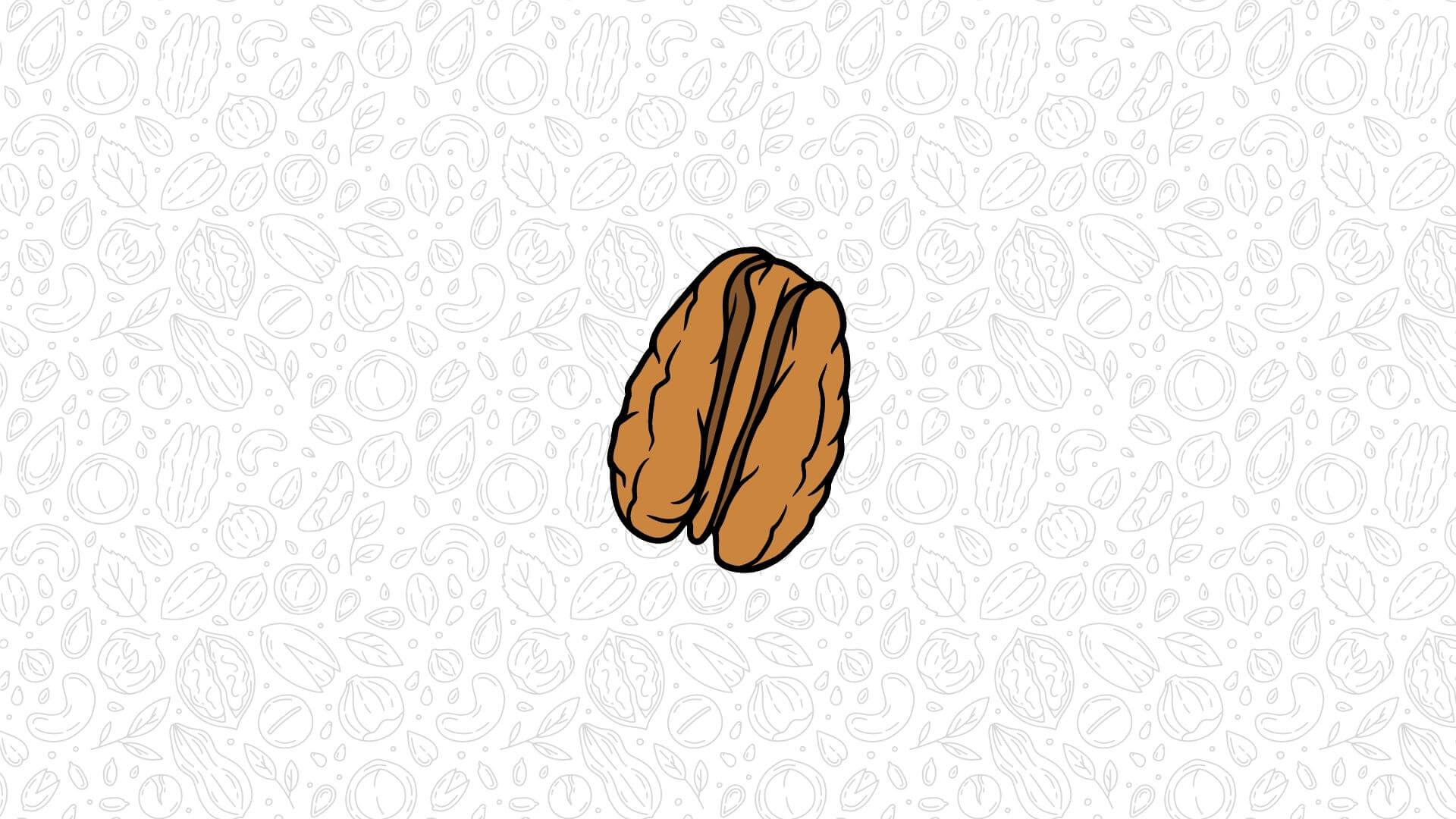
6. Walnuts
A 1 oz. serving contains 190 calories, 4 g protein, 18g fat, 4g carbohydrates, 2g fiber, and 1g sugar. But what is most special about walnuts is that they are a good source of the heart-healthy omega 3 fatty acid, ALA.20
Walnuts are known to positively impact blood lipid levels, but their impact on blood sugar levels needs to be clarified. In a large study with people at high risk for diabetes, those who ate walnuts, compared to those who didn’t, had a lower risk of developing diabetes.21
Tip: Add chopped walnuts and chia seeds to a smoothie for breakfast or an afternoon snack for extra protein and fiber.
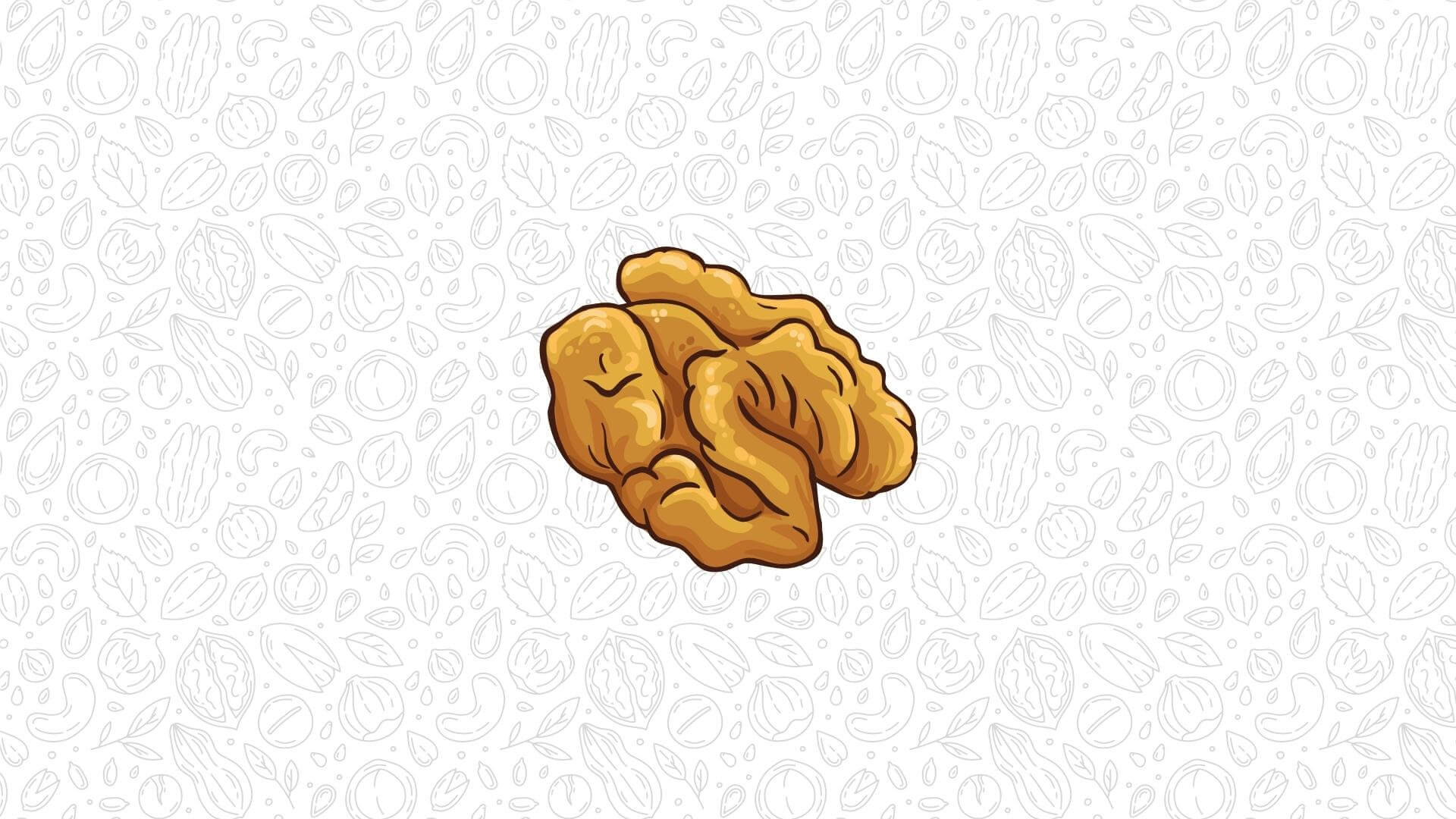
Eating Nuts Is Good for Your Health: 4 Benefits
Tree nuts and peanuts are nutrient-rich foods with many other health benefits and should be part of a healthy diet.2,22
- Heart health
While nuts are high in calories and fat, they contain “good” fat, called unsaturated fats. They are rich in mono and polyunsaturated fats, known to lower total cholesterol and LDL cholesterol levels, reducing the risk of heart disease.2,22
- Gut health
Nuts are a good source of dietary fiber, healthy fatty acids, and antioxidants. They provide nutrients for healthy bacteria to use throughout our GI tract. Early research in this area shows that nuts may impact our GI tract's health.23 More research is needed to fully understand how they can be beneficial.
- Brain health
In a large systematic review, walnuts showed a beneficial effect on brain function, including improvements in memory in older adults.24 Walnuts are rich in ALA Omega 3 fatty acids, which help to reduce inflammation and have neuroprotective effects.
- Weight control
While nuts are high in fat and calories, they often replace other foods. Research does not show that people who eat nuts experience increased weight.2
FAQs About Nuts and Blood Sugar
Are There Any Nuts You Should Avoid?
Sugar-coated and honey-roasted nuts may contain extra sugar. The same can is true for chocolate and yogurt-coated nuts. That chocolate or yogurt coating often contains a lot of sugar. Look at the ingredient list, and you'll see that sugar is one of the first ingredients.
Why Are Stable Blood Sugar Levels Important?
When you eat a lot of sugar or eat inconsistently, your blood sugar bounces up and down. Your pancreas tries to keep up and starts releasing too much insulin. Over time, your cells stop responding to insulin, called insulin resistance. Insulin resistance may increase the risk of type 2 diabetes, cardiovascular disease, and weight gain.4
How often should people living with diabetes eat nuts?
Consult a registered dietician, nutritionist, or healthcare provider to determine how often you should include nuts based on health factors and wellness goals.
People Also Ask:
Which nuts should diabetics avoid?
Sugar-coated and honey-roasted nuts may contain extra sugar. The same can is true for chocolate and yogurt-coated nuts. That chocolate or yogurt coating often contains a lot of sugar. Look at the ingredient list, and you'll see that sugar is one of the first ingredients.
What kind of nuts raise blood sugar?
Nuts coated in sugar or a candy coating can raise blood sugar levels. Be mindful of the ingredients in a nut product before purchasing.
Can a diabetic eat too much nuts?
Nuts can contain excess calories, so be purposeful with portion sizes and overall intake to avoid weight gain.
- Item 1
- Item 2
- item 3
Topics discussed in this article:
References
- Ginsberg H. N. (2000). Insulin resistance and cardiovascular disease. The Journal of clinical investigation, 106(4), 453–458. https://doi.org/10.1172/JCI10762
- de Souza, R., Schincaglia, R. M., Pimentel, G. D., & Mota, J. F. (2017). Nuts and Human Health Outcomes: A Systematic Review. Nutrients, 9(12), 1311. https://doi.org/10.3390/nu9121311
- Kim, Y., Keogh, J., & Clifton, P. M. (2018). Nuts and Cardio-Metabolic Disease: A Review of Meta-Analyses. Nutrients, 10(12), 1935. https://doi.org/10.3390/nu10121935
- U.S.D.A., Agricultural Research Service, FoodData Central. (2019). Nuts, Almonds. https://fdc.nal.usda.gov/fdc-app.html#/food-details/170567/nutrients
- Tan, S. Y., & Mattes, R. D. (2013). Appetitive, dietary and health effects of almonds consumed with meals or as snacks: a randomized, controlled trial. European journal of clinical nutrition, 67(11), 1205–1214. https://doi.org/10.1038/ejcn.2013.184
- Li, S.C., Liu, Y.H., Liu, J.F., Chang, W.H., Chen, C.M., & Chen, C.Y.O. (2010). Almond consumption improved glycemic control and lipid profiles in patients with type 2 diabetes mellitus. Metabolism: Clinical and Experimental, 60(4), P474-479. https://doi.org/10.1016/j.metabol.2010.04.009
- U.S.D.A., Agricultural Research Service, FoodData Central. (2019). Nuts, cashew nuts, dry roasted, without salt added. https://fdc.nal.usda.gov/fdc-app.html#/food-details/170571/nutrients
- American Optometric Association. (n.d.) Retrieved May 4, 2022 from https://www.aoa.org/healthy-eyes/caring-for-your-eyes/diet-and-nutrition?sso=y
- Man, E., Schulz, J.A., Kaden, V.N., Lawless, A.L., Rotor, J., Mantilla, L.B., & Lisa, D.J. (2017). Cashew consumption reduces total and LDL cholesterol: a randomized, crossover, controlled-feeding trial, The American Journal of Clinical Nutrition, 105(5), 1070–1078. https://doi.org/10.3945/ajcn.116.15003 7
- Darvish Damavandi, R., Mousavi, S. N., Shidfar, F., Mohammadi, V., Rajab, A., Hosseini, S., & Heshmati, J. (2019). Effects of Daily Consumption of Cashews on Oxidative Stress and Atherogenic Indices in Patients with Type 2 Diabetes: A Randomized, Controlled-Feeding Trial. International journal of endocrinology and metabolism, 17(1), e70744. https://doi.org/10.5812/ijem.70744
- U.S.D.A., Agricultural Research Service, FoodData Central. (2019). Nuts, pistachio nuts, raw. https://fdc.nal.usda.gov/fdc-app.html#/food-details/170184/nutrients
- Kendall, C., Josse, A., Esfahani, A. et al. The impact of pistachio intake alone or in combination with high-carbohydrate foods on post-prandial glycemia. Eur J Clin Nutr 65, 696–702 (2011). https://doi.org/10.1038/ejcn.2011.12
- Parham, M., Heidari, S., Khorramirad, A., Hozoori, M., Hosseinzadeh, F., Bakhtyari, L., & Vafaeimanesh, J. (2014). Effects of pistachio nut supplementation on blood glucose in patients with type 2 diabetes: a randomized crossover trial. The review of diabetic studies : RDS, 11(2), 190–196. https://doi.org/10.1900/RDS.2014.11.190
- U.S.D.A., Agricultural Research Service, FoodData Central. (2019). Peanuts, virginia, raw. https://fdc.nal.usda.gov/fdc-app.html#/food-details/172434/nutrients
- NHRMC - Novant Health. (n.d.) Retrieved May 4, 2022 from https://www.nhrmc.org/~/media/testupload/files/low-gylcemic-meal-planning.pdf?la=en
- Reis, C., Ribeiro, D., Costa, N., Bressan, J., Alfenas, R., & Mattes, R. (2013). Acute and second-meal effects of peanuts on glycaemic response and appetite in obese women with high type 2 diabetes risk: A randomised cross-over clinical trial. British Journal of Nutrition, 109(11), 2015-2023. https://doi.org/10.1017/S0007114512004217
- Hou, Y. Y., Ojo, O., Wang, L. L., Wang, Q., Jiang, Q., Shao, X. Y., & Wang, X. H. (2018). A Randomized Controlled Trial to Compare the Effect of Peanuts and Almonds on the Cardio-Metabolic and Inflammatory Parameters in Patients with Type 2 Diabetes Mellitus. Nutrients, 10(11), 1565. https://doi.org/10.3390/nu10111565
- U.S.D.A., Agricultural Research Service, FoodData Central. (2019). Nuts, Pecans. Retrieved May 4, 2022, from https://fdc.nal.usda.gov/fdc-app.html#/food-details/170182/nutrients
- McKay, D., Eliasziw, M., Chen, C., & Blumberg, J. (2018). A Pecan-Rich Diet Improves Cardiometabolic Risk Factors in Overweight and Obese Adults: A Randomized Controlled Trial. Nutrients, 10(3), 339. https://doi.org/10.3390/nu10030339
- U.S.D.A., Agricultural Research Service, FoodData Central. (2019). Nuts, Walnuts, English. Retrieved May 4, 2022, from https://fdc.nal.usda.gov/fdc-app.html#/food-details/170187/nutrients
- Arab, L., Dhaliwal, S. K., Martin, C. J., Larios, A. D., Jackson, N. J., & Elashoff, D. (2018). Association between walnut consumption and diabetes risk in NHANES. Diabetes/metabolism research and reviews, 34(7), e3031. https://doi.org/10.1002/dmrr.3031
- Khalili, L., A-Elgadir, T., Mallick, A. K., El Enshasy, H. A., & Sayyed, R. Z. (2022). Nuts as a Part of Dietary Strategy to Improve Metabolic Biomarkers: A Narrative Review. Frontiers in nutrition, 9, 881843. https://doi.org/10.3389/fnut.2022.881843
- Creedon, A. C., Hung, E. S., Berry, S. E., & Whelan, K. (2020). Nuts and their Effect on Gut Microbiota, Gut Function and Symptoms in Adults: A Systematic Review and Meta-Analysis of Randomised Controlled Trials. Nutrients, 12(8), 2347. https://doi.org/10.3390/nu12082347
- Theodore, L. E., Kellow, N. J., McNeil, E. A., Close, E. O., Coad, E. G., & Cardoso, B. R. (2021). Nut Consumption for Cognitive Performance: A Systematic Review. Advances in nutrition (Bethesda, Md.), 12(3), 777–792. https://doi.org/10.1093/advances/nmaa153
- O'Neil, C. E., Keast, D. R., Nicklas, T. A., & Fulgoni, V. L., 3rd (2011). Nut consumption is associated with decreased health risk factors for cardiovascular disease and metabolic syndrome in U.S. adults: NHANES 1999-2004. Journal of the American College of Nutrition, 30(6), 502–510. https://doi.org/10.1080/07315724.2011.10719996

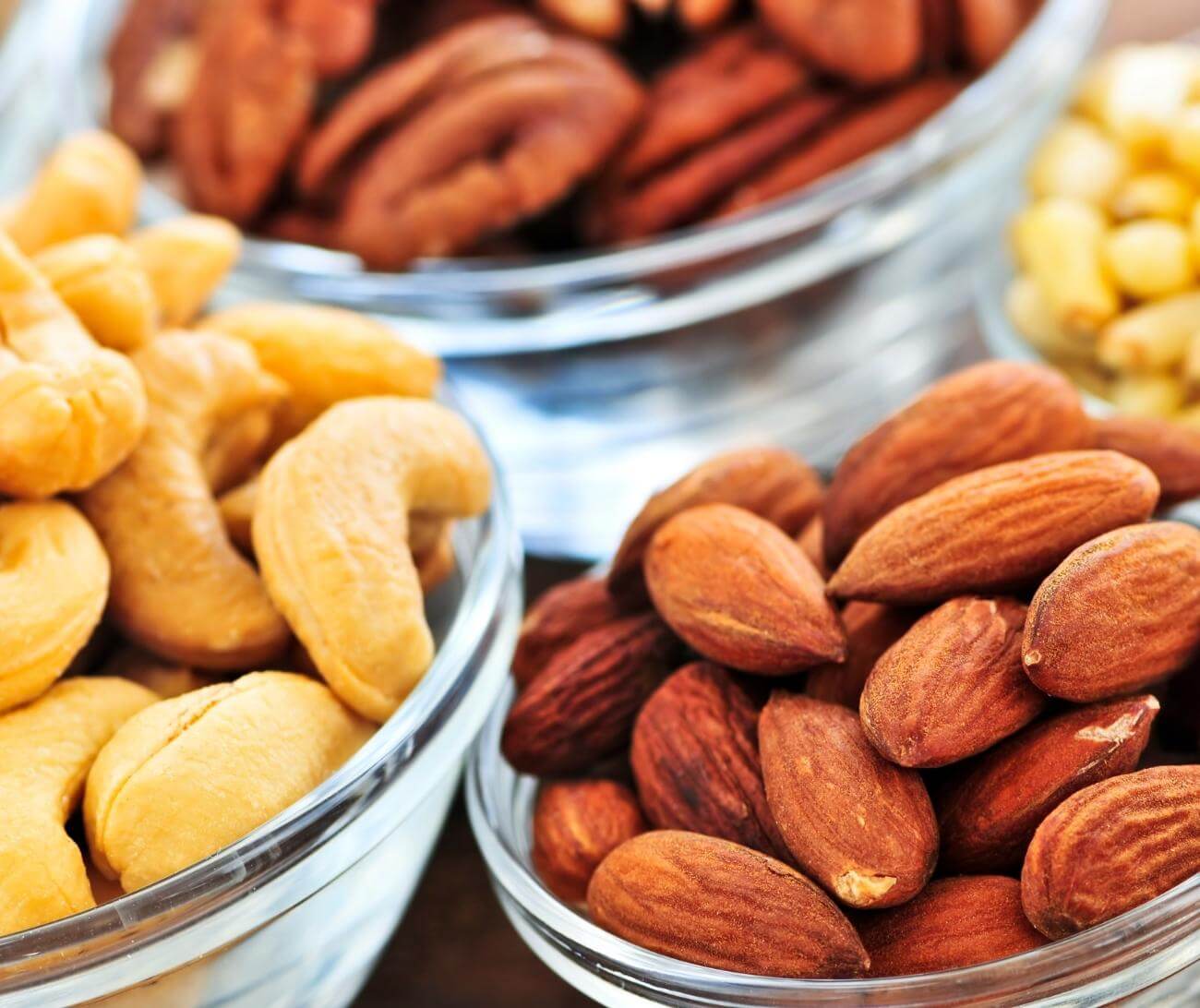
.jpg)

